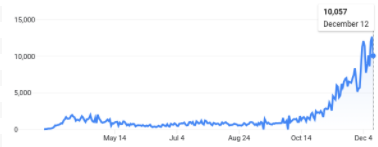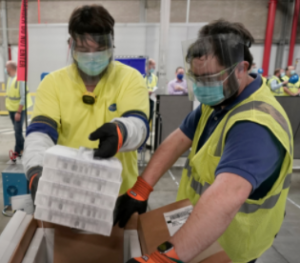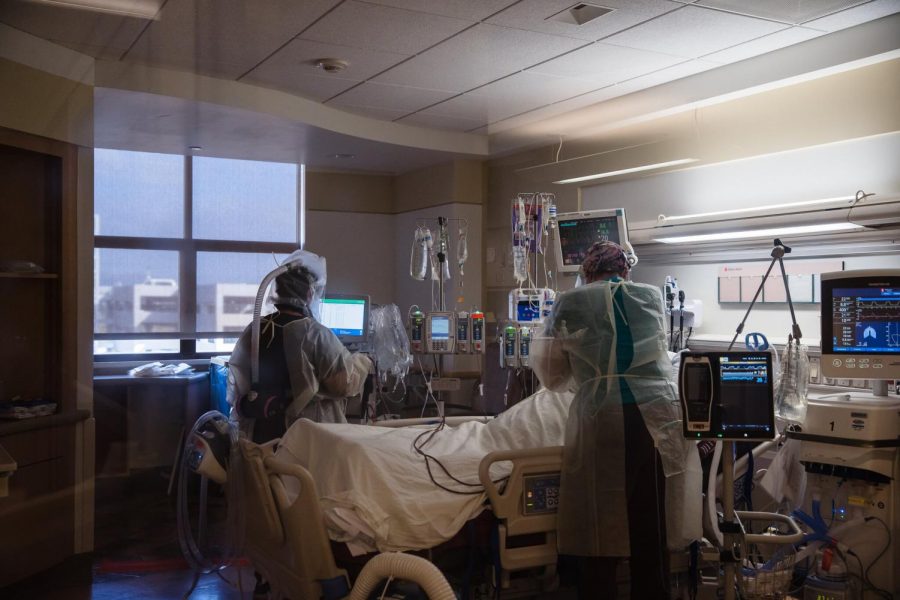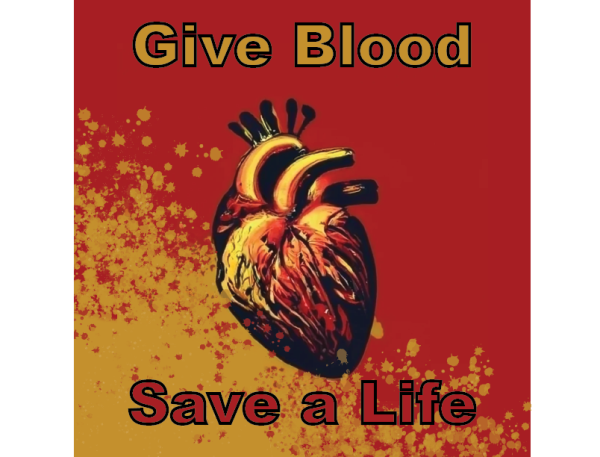COVID-19 Cases Rise: Hope on the Horizon
Healthcare workers tend to a COVID-19 patient in San Diego, CA.
March 13th is a day no one will ever forget; it was the last day of “normal” before the whirlwind of COVID-19 that brought masks, social distancing, and isolation into our lives. March 13th was nine months ago, and almost every aspect of life has been changed in some way since then. It has also been nearly a year since the first case of COVID-19 was found and identified. However, people in the U.S. seem to care less and less about precautionary measures even as cases skyrocket.
Less than a month and a half after America reported 100,000 cases in a day (11/4/2020), the country now reports nearly twice that number daily. Just two weeks after Thanksgiving, the United States also had more than 3,000 COVID-19 deaths in a day, a heartbreaking new record. According to The New York Times, Pennsylvania has reported around 5,000 to 12,000 new cases every day for the last two weeks, and this number is steadily increasing. For reference, when schools shut down in March, there were less than 1,000 cases a day in PA. Worldwide, COVID-19 has left 1.6 million people dead with the U.S. making up more than three hundred thousand of those deaths (over 25%).

Spikes after Halloween and Thanksgiving are extremely concerning to scientists, due not only to the ever-increasing amount of new cases since then but also because this is further evidence of people not listening to safety guidelines. Medical professionals, scientists, and many politicians have sympathized with citizens, but have also begged people to stay home during the holidays. If traveling is necessary, the CDC urges citizens to get tested for COVID-19 twice before doing so.
Not all things COVID-19 related are quite this dreary, though. On Wednesday, December 9th, the first doses of the Pfizer/BioNTech vaccine were distributed to the general public in the United Kingdom. This was a huge step, not only for the U.K., but for the whole world. For the first time since March, many people saw a glimmer of hope.
On Friday, December 11th, Pfizer/BioNTech vaccine was approved to be distributed in the U.S. by the FDA as an emergency authorization. 2.9 million doses of the vaccine were packed in dry ice and sent out on trucks on Sunday morning. Logistically, shipping out these vaccines is a huge challenge, but professionals are excited and hopeful nonetheless. The distribution of vaccines will in no way fix everything, nor will it be either simple or fast, but it is something, and, at this stage, that is what matters. On Monday, December 14th, the first doses were administered in the U.S. to high-risk health care workers. Higher risk citizens will get the vaccine first, meaning children under the age of 16 will be the last in line. Seventy-five to eighty percent of the population need to be vaccinated in order to achieve herd immunity. Scientists estimate that this will happen between May and December of 2021.

The Pfizer/BioNTech vaccine is different from other vaccines such as the flu shot, which many people get every year. The COVID-19 vaccine requires two doses administered three weeks apart for full protection. It is an mRNA vaccine (messenger RNA) that puts “genetic material into people’s cells so that the cells produce proteins that will trigger an immune reaction” (NPR). Vials of the vaccine need to be stored at -70° Celcius (-94° Fahrenheit) temperatures and packed in dry ice for shipping.
The Pfizer/BioNTech vaccine hasn’t been tested on anyone younger than 16 or pregnant women. On Friday, when the vaccine was administered to the general public for the first time in the U.K., two people went into anaphylactic shock. These two people had severe allergies, a history of anaphylaxis, and carried EpiPens. According to an FDA factsheet, people who have had severe allergic reactions to other vaccines should not take the vaccine now.
While vaccines are being approved and administered rapidly, that does not change anything about the levels of precaution that need to be taken. COVID-19 is still just as contagious and deadly. There is a light at the end of the tunnel, but 75-80% of people will need to be vaccinated before herd immunity is achieved. It is imperative that people continue to socially distance, avoid large gatherings, wear masks, and self-isolate when experiencing symptoms.















